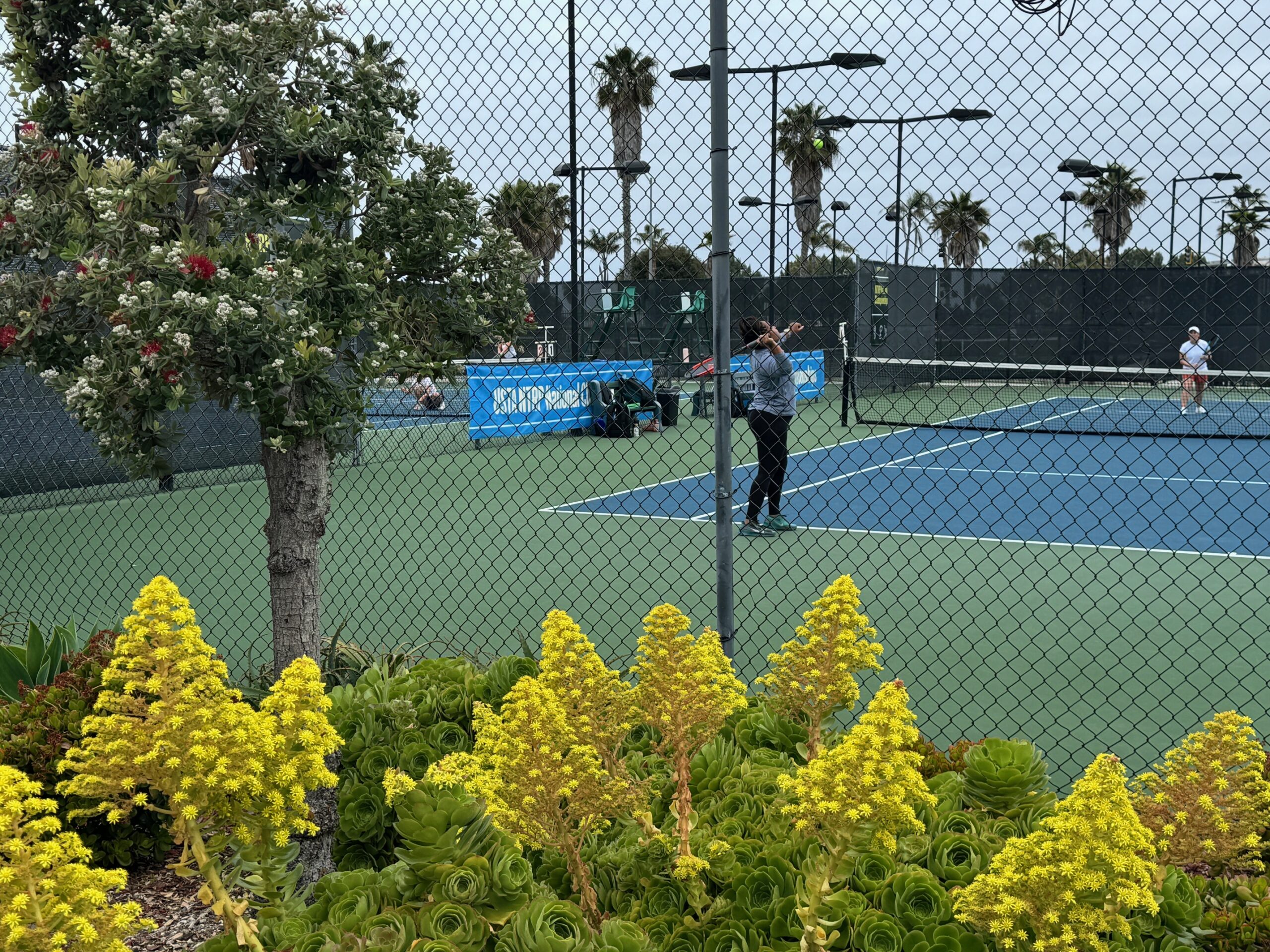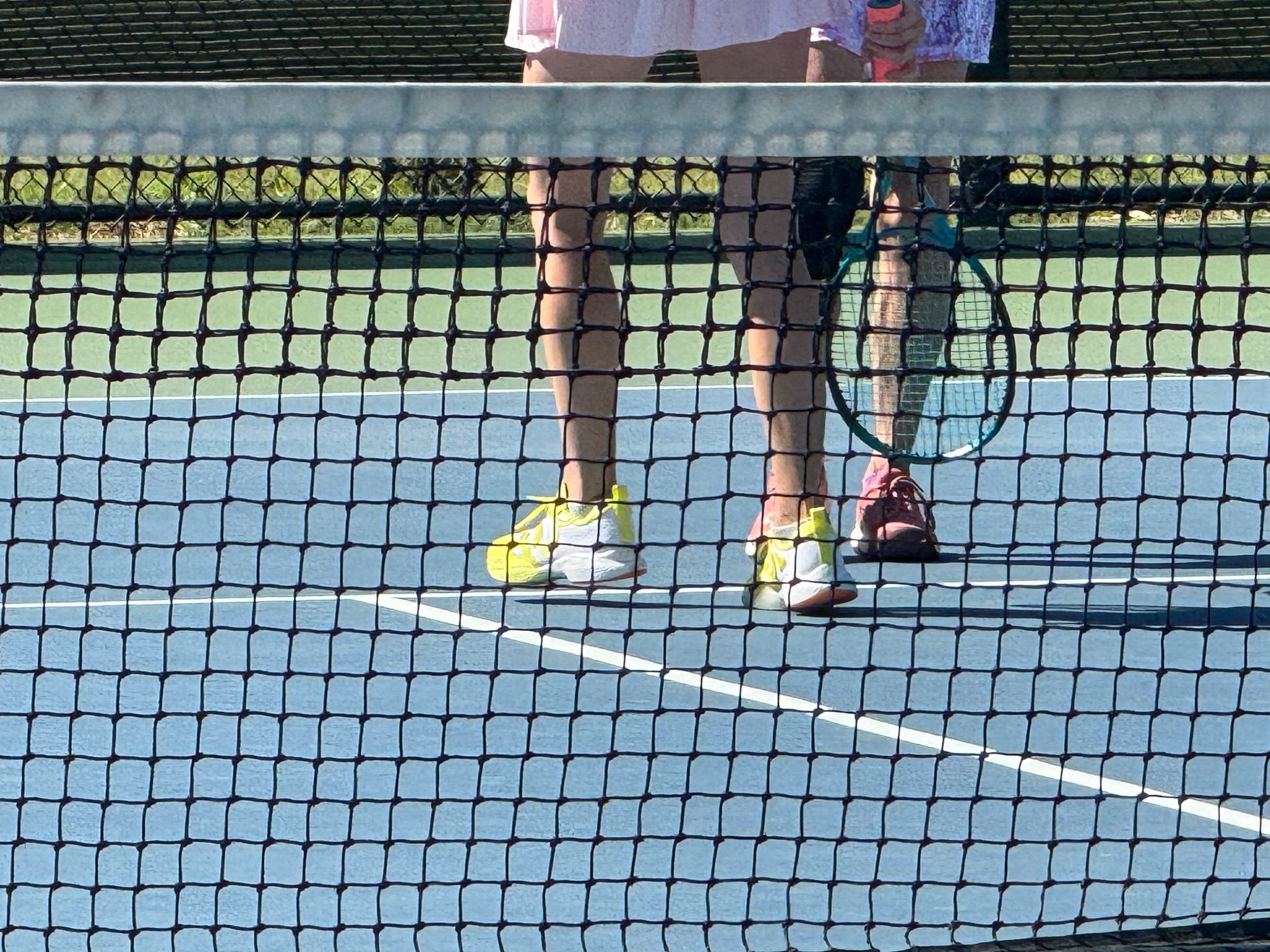On the first full weekend of each month in 2024, I am exploring tennis-specific interpretations of concepts presented in ‘Designing Your Life: How to Build a Well-Lived, Joyful Life.‘ This weekend’s topics are inspired by the book’s first chapter, “Start Where You Are.” Today we are focusing on the art of identifying problems. As it turns out, it is wickedly hard to solve poorly understood problems.
If you don’t start with a clear idea of the problem, there is a significant risk of developing an elegant solution that solves nothing. Sometimes actions can actually make the situation even worse. For example, a person might decide that clutter is the problem and purchase an expensive modular organization system. That is fine… unless the real issue is having too many things in the first place coupled with keeping unnecessary items around that will never be needed again.
(Every once in a while, I write something with the clear knowledge that the Trophy Husband will pointedly read it out loud to me once it is published. The previous paragraph is one of those instances.)
It is fairly common in tennis for players to misdiagnose mechanical issues in their groundstrokes. That is why the independent perspective of a teaching pro can be so valuable. I’d be willing to wager that we have all had a player in our orbit who obsesses over the swing path on their serve, when the real issue is the location of the toss.
I also think there are many examples within the tennis ecosystem of misunderstood problems that lead to poor solutions. For example, the continuous tweaking of existing tennis delivery products and services to attract more players in their 20s and 30s is likely intended to solve the perceived “problem” that there is something wrong with the current offerings. However, there is a possibility that the things that would entice players in that demographic aren’t being offered at all.
The ‘Designing Your Life’ book cautions against attempting to solve “gravity” problems. That is defined to be things that cannot be impacted or changed. While this was a new term to me, it is similar to “tilting at windmills” from Don Quixote. At my day job, “physics gets a vote” is commonly invoked when a solution attempts to circumvent the laws of physics. In other words, sometimes solving a problem is futile because the problem selected has no practical solution. It is best to recognize gravity problems and avoid them altogether.
Some of my recent posts have sparked good conversations about the culture of the USTA League and its impact on the broader tennis ecosystem. At the root of the debate is a prevailing idea that tennis matches that involve a mismatch in skill level between the competitors is undesirable. Unfortunately, such matches are actually unavoidable under some circumstances. In other words, many of the USTA League Regulations and resulting culture may have come about because the organization has been faithfully attempting to fix an unsolvable problem.
At the individual level, the best way to leverage design-oriented thinking to improve your tennis life is likely in two areas. The first is how you engage with tennis to maximize your enjoyment of the sport. The second is using design-oriented thinking principles to improve tennis performance.
For example, I have a friend who used to be a teaching pro and remained an avid player even after switching to a non-tennis-related profession. A few years ago, he realized that tennis was negatively impacting his quality of life. We were all shocked when he announced that he was stepping away from organized tennis and instead was only going to participate in arranged fun matches and drills for the indefinite future.
Though he didn’t use the word “experiment” or the phrase “design-oriented thinking” to describe his hiatus, that is exactly what he did. By intentionally modifying his engagement with organized play he discovered that the issue wasn’t the sport but rather how people behave under certain formats of competition. Changing his approach helped him pinpoint the source of his dissatisfaction and fix it.
Using an experimental approach and design-oriented thinking can be extremely beneficial for fine-tuning tennis performance. For example, I am in the midst of a series of experiments aimed at improving my footwork, which has recently suffered following two years of injury. In fact, tennis performance might be the most fertile application point for this approach.
Problem identification is a wickedly hard task, but one that is essential in order to develop effective solutions. When exploring the intricacies of starting with the right problem, it becomes evident that the application of design-oriented thinking and an experimental mindset is a profound means of cultivating a well-lived and joyful tennis life.
If that sounds like something you want for yourself, then ‘Designing Your Life: How to Build a Well-Lived, Joyful Life,’ is a book that I recommend. If not… seek help.
Throughout 2024, I am publishing a series of essays imaging how to apply the principles in ‘Designing Your Life: How to Build a Well-Lived, Joyful Life‘ (<- sponsored link), which is a non-tennis book that I have come to believe that everyone should read.
A chronological summary of all posts on this topic is available on the Designing Your Tennis Life summary page.



